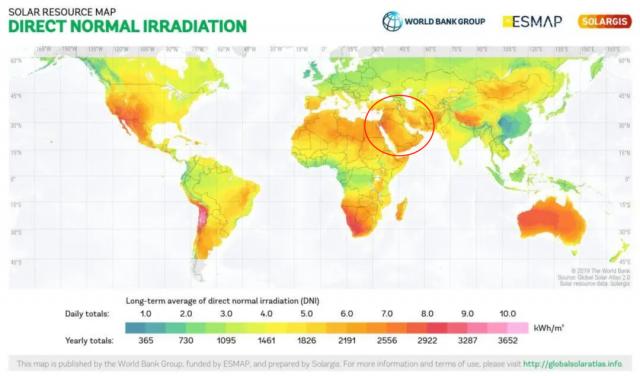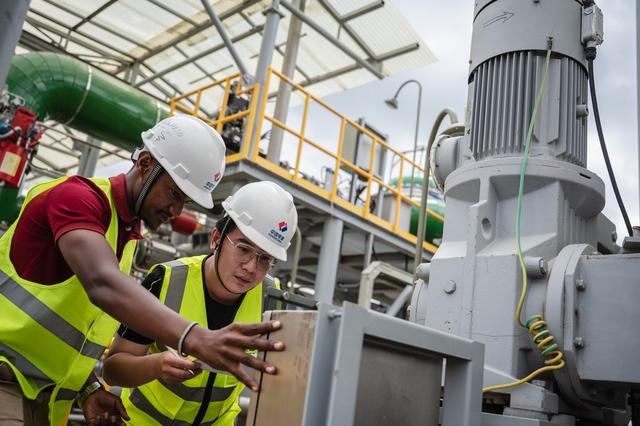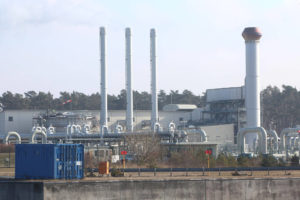The 2022 Qatar World Cup kicked off on November 21, capturing the world’s attention as 32 teams competed for glory on the football field. True to the tournament’s slogan, “Now is All,” the event united people globally, with the spotlight firmly on host nation Qatar. Beyond the excitement of the games, this World Cup also marked a significant step forward in energy transformation, showcasing the synergy between China’s photovoltaic industry and the Middle East’s commitment to sustainable development.
The First “Carbon Neutral” World Cup
Qatar, one of the hottest countries in the world, opted to host the World Cup in winter to mitigate extreme temperatures. However, with average highs still reaching 30°C, innovative solutions like outdoor air conditioning were deployed. Despite its dominance in the traditional energy sector, Qatar made a historic pledge to host the first “carbon neutral” World Cup, underscoring the global reach of the energy transition.

To achieve this goal, the organizing committee implemented ten key measures to reduce the event’s carbon footprint. These included constructing sustainable buildings, planning renewable energy solutions, recycling stadiums, creating green spaces, and promoting green transportation. Central to these efforts was the large-scale adoption of renewable energy, exemplified by the Kharsaah 800MW photovoltaic power station, built by a Chinese company.
A Landmark in Renewable Energy
The Kharsaah solar power plant is Qatar’s first solar facility, its first non-fossil fuel power plant, and the world’s third-largest single-site photovoltaic project. Utilizing Hi-MO bifacial modules from Chinese company LONGi, it is also the world’s largest photovoltaic project to employ a tracking system and bifacial modules. The plant is expected to generate approximately 1.8 billion kWh of green electricity annually, enough to power 300,000 households and reduce carbon emissions by 900,000 tons each year. By supplying clean energy to World Cup venues, the project played a pivotal role in fulfilling Qatar’s promise of a carbon-neutral tournament.
Now fully operational, the Kharsaah plant represents a milestone in Qatar’s renewable energy development. The Supreme Committee for Delivery and Legacy (SC) announced that the carbon emissions saved by the plant will offset roughly half of the emissions generated by hosting the World Cup.
Why the Middle East is Embracing Photovoltaics
Qatar, a small but resource-rich nation on the Persian Gulf, is a microcosm of the broader energy transformation sweeping the Middle East. Blessed with abundant natural gas and oil reserves, Qatar has leveraged its wealth to become one of the region’s most prosperous countries. However, the construction of the Kharsaah photovoltaic plant signals a shift toward renewable energy, reflecting a regional trend

Over the next decade, the Middle East is expected to add 50GW of photovoltaic capacity. Several factors make the region a hotspot for solar energy development:
- Abundant Solar Resources: The Middle East’s predominantly subtropical desert climate offers ample sunlight, making it ideal for large-scale solar power generation.
- Economic Diversification: The global push for carbon neutrality has prompted Middle Eastern nations to seek economic reforms, with photovoltaics offering a cost-effective and sustainable solution.
- Strategic Leadership: The headquarters of the International Renewable Energy Agency (IRENA) is located in the United Arab Emirates, signaling the region’s commitment to energy transformation despite its traditional reliance on fossil fuels.
The Broader Impact of Energy Transformation
The Middle East remains a critical player in the global energy industry, holding 48.3% of the world’s oil reserves and 40.3% of its natural gas reserves as of 2021. However, the development of renewable energy is increasingly seen as a cornerstone of economic and social reform. For the region, energy transformation is not just about sustainability—it’s about shaping its future and influencing the global energy landscape.
A Global Shift Toward Clean Energy
Qatar’s efforts, along with those of the broader Middle East, reflect a global movement toward clean, low-carbon energy systems. As a driving force behind this transition, photovoltaic technology has revolutionized the energy sector, shifting it from a resource-dependent model to one rooted in manufacturing and innovation.
From the discovery of static electricity to the invention of the generator, advancements in energy technology have transformed human society. Today, photovoltaic power generation continues this legacy, bringing light and power to millions while reducing reliance on fossil fuels. This is the mission—and the glory—of photovoltaics.
The 2022 Qatar World Cup not only celebrated the spirit of football but also highlighted the potential for international collaboration in achieving a sustainable energy future. Through projects like the Kharsaah solar plant, China and the Middle East are writing a new chapter in the global energy transition.



